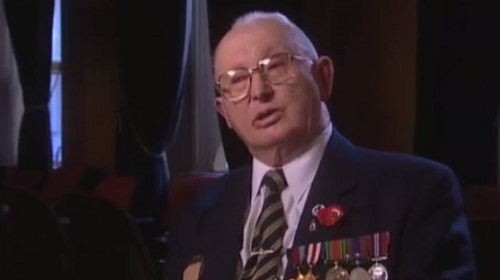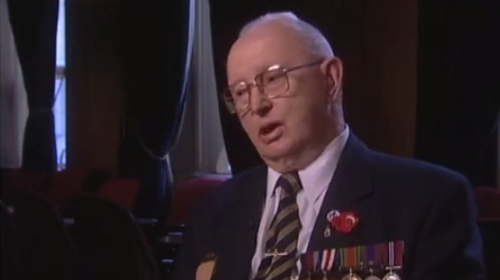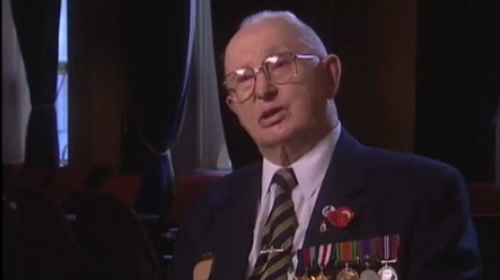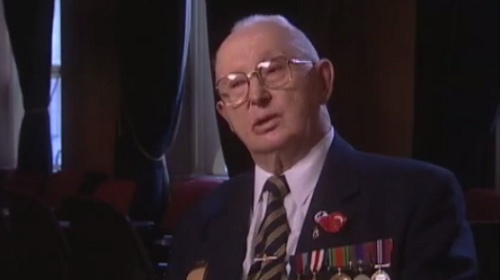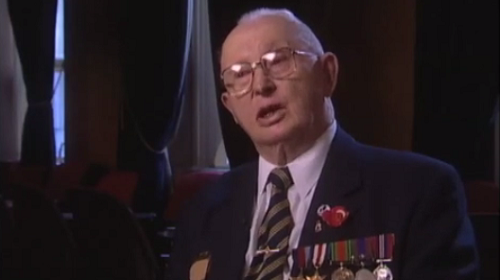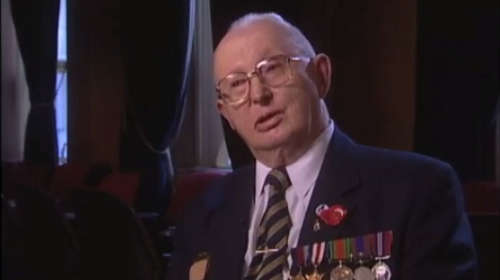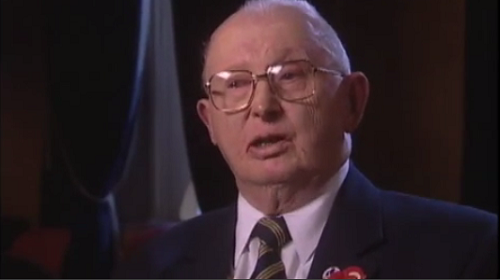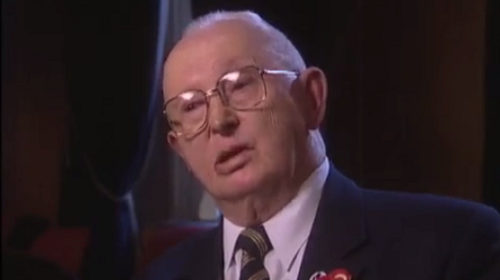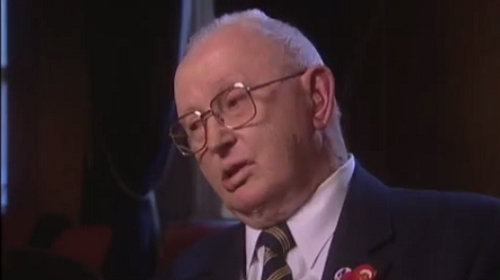We could've gone out there and fired those five shots, and what
is it, it's finished. We got no more ammunition. Our job was to
find targets for our group so they could advance. Without us
they would never been able to do it. We weren't the only ones.
There was Americans, British, and Polish too, but for our group,
for our division, we were the ones that was doing it for them.
And if you're in a tight spot, and we did get into a good tight
spot there once, just before the, right after these... Things
we got into, one village there and the machine guns were really
making havoc with the infantry people, so we were told, “Well,
see what you can do. Get out there.” We'd sneak out there
under a bombardment. They would always pretend there's
something going on, but the Germans knew something was going
to... these were the camouflage things, see. So we'd sneak in
at night, going on some.... and you're taking the chance of
running over mines and things like that, and we'd get into this
area that we were told to find out this machine gun. There was
maybe about ten machine guns... they were embedded in there.
These guys just couldn't get nowhere near them. So we went in
with our tank and a Bren gun carrier and an officer and myself
and operators and the artillery guy, and we found them. We
start to, we tried to clean them out with our machine guns, and
our officer got a little bit too close in there so we had to
shoot over his head so he could crawl out back ‘cause if he
stood up, he was gone. So anyway, when he got to the tank, in
the meantime, two German tanks had been... one of their better
tanks, the Panther - they had two, Tiger and Panther, that were
really, really dangerous tanks. They had the biggest guns on
them, and they started shooting at me, at our tank. They, the
first shot took all things, stuff off the back. Then they took
some more stuff off there. There was about four shots, and the
last one was... we used to carry our blankets on the turret and
that just flew right off. We thought, “Well the next one is us.
We're goners, we're finished.” So we threw up a little bit of a
smoke screen, and they went around the side of the hill and they
were, they had the advantage of a barn, but they made a mistake.
They went along the barn and we could see them through the
slats of the daylight, the silhouette, fired shots and we got
him. But we never stopped to find out what happened to him
because it was all smoke. We didn't know if there was some more
with him, so we sneaked back out of there and got back into...
and when you're young, 21, you're scared but you do things that.
See, at that time, when we were young kids, we're chasing
rabbits and sneaking around, playing Indians you know, and you
get, some of that tactics kind of worked, how to sneak around
and get in there and find out things. You felt proud that you
could do it. I mean, you don't get medals for those things,
that's not the idea. It's just somebody's got to do it, you
were told to do it. When it's finished it gives you a....
something goes haywire with you, it doesn't work right.



